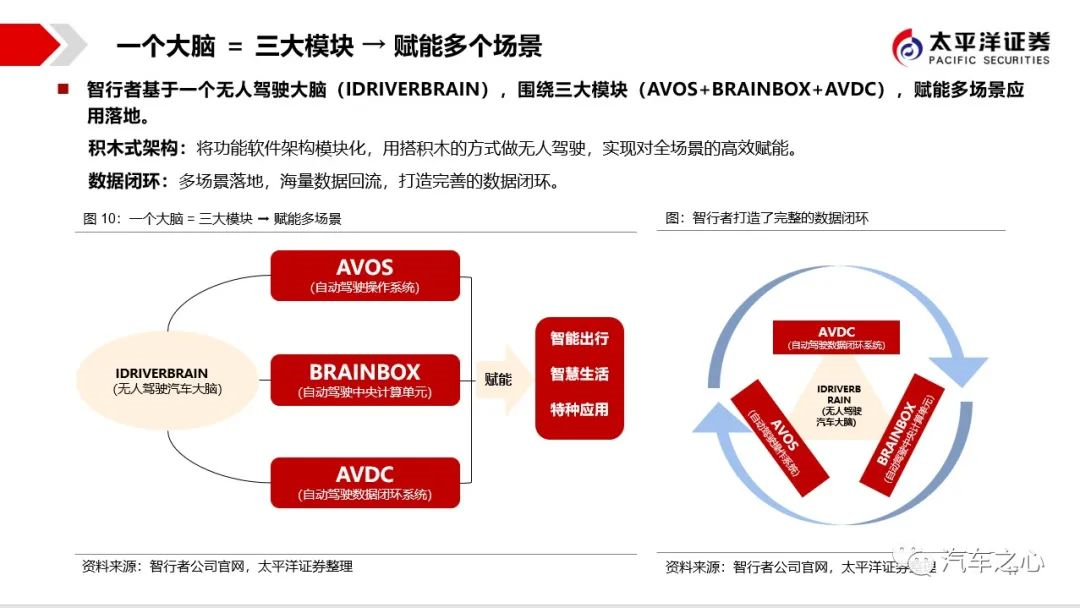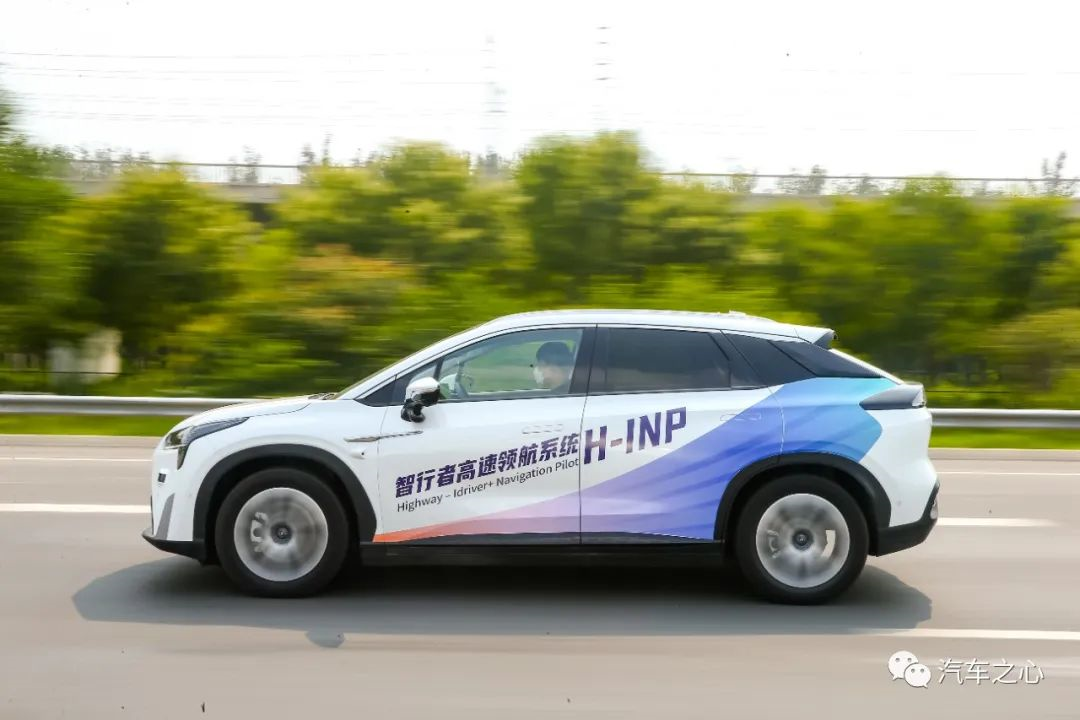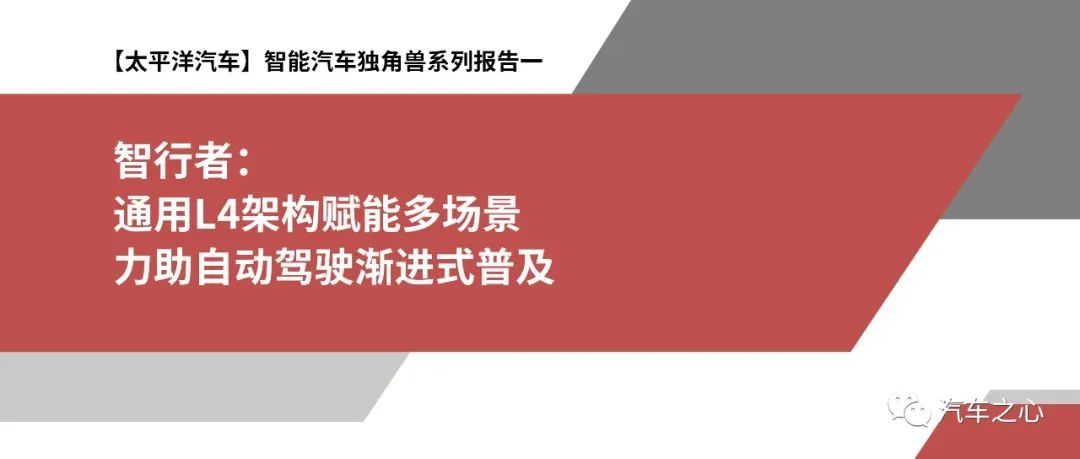Author: Changsheng
Affected by the environment and the slow commercialization landing, the trend of autonomous driving is declining, and it is approaching the commercialization landing bottleneck. To pass this “bottleneck” and wait for the next trend, the autonomous driving company that was once at the highest point of the trend of Robotaxi, due to technical and landing difficulties, took the lead in starting the transformation trend, and technology exploration and scenario exploration have become the mainstream.
Unlike autonomous driving companies seeking survival at a lower level, the capital market is still optimistic about the huge market space of Robotaxi. Recently, the Pacific Securities Automotive Team released the “Intelligent Vehicle Unicorn Series Report” (hereinafter referred to as the report), which believes that Robotaxi represents the ideal form of future ground shared travel, and the Robotaxi market scale is expected to exceed RMB 2.93 trillion by 2030.
At the same time, the report also pointed out that technology and cost are still the biggest obstacles to the commercialization of Robotaxi. Therefore, if autonomous driving companies want to win the future Robotaxi commercial landing competition, they need to have multiple abilities and advantages.
Robotaxi market scale is expected to exceed RMB 2.93 trillion by 2030
“China Intelligent Networked Automotive Development Roadmap 2.0” pointed out that the market share of L2+ and L3 level autonomous driving new cars will exceed 50% by 2025, and the market share of autonomous driving new cars will exceed 90% by 2030. By then, autonomous driving will become a standard configuration of the new generation of cars, affecting people’s travel life.
Looking at the development of autonomous driving in China, on the policy side, 21 cities in China have issued autonomous driving test licenses for a total of 60 companies, and Beijing, Shanghai, and Guangzhou have opened thousands of kilometers of autonomous driving test roads. Shenzhen is the first city in China to legislate for L3 level autonomous driving.
In terms of the MPI, a core indicator of autonomous driving, the domestic players have greatly increased in the road test mileage, with AutoX ranking first.
The report pointed out that in the application scenarios of autonomous driving, the landing difficulty of passenger-carrying scenarios is the highest, and the technology threshold is the highest.
With the continuous development of the “electrification-intelligence-networking-sharing” process of the automotive industry, Robotaxi, which combines the “four modernizations,” represents the ideal form of future ground shared travel.
According to Pacific Securities’ forecasts, in 2025/2030, the Robotaxi market scale in China is expected to exceed RMB 1.18 trillion/RMB 2.93 trillion, and Robotaxi will become one of the largest market space for autonomous driving scenarios.Pacific Securities believes that the Robotaxi commercial model for passenger scenarios has been established, and there are currently four mainstream commercial models: autonomous operation, cooperation with transportation companies, cooperation or joint venture with automakers, and transportation companies’ self-research.
The pace of commercialization of Robotaxis is accelerating, but technical and cost constraints still exist, making the speed and cost of data acquisition a core competitive advantage for autonomous driving companies.
DeepRoute has full-stack R&D capabilities and multi-scenario empowerment
Since its establishment in 2015, DeepRoute has always insisted on technological research and development. Its independently developed autonomous driving brain contains three major modules: the Autonomous Vehicle Operating System (AVOS), the Autonomous Driving Central Computing Unit (BRAINBOX), and the Autonomous Driving Data Closed Loop Platform (AVDC).

AVOS adopts a layered decoupled architecture of system software, functional software, and application software, achieving high cohesion of functions and low coupling of business, which can fully adapt to various business scenarios.
BRAINBOX is the hardware computing platform that supports AVOS. DeepRoute has successfully created multiple hardware solutions including vehicle-grade and commercial-grade.
AVDC is based on the same software architecture, and breaks down the data barriers and architectural barriers of L2+/L3/L4 by using data collected through mass production, which can feed back L4 algorithms.
Based on the brain module architecture of autonomous driving, DeepRoute’s autonomous driving brain has two major advantages, modular architecture and closed loop data. Modular architecture modularizes the functional software architecture module to make autonomous driving easier by making it more adaptable to all scenarios. The closed loop data refers to DeepRoute achieving the flow of massive data through multiple scenarios, creating a complete closed-loop data.
Based on the general-purpose autonomous driving brain, DeepRoute has already brought products to multiple scenarios such as smart travel, smart life, and special applications, entering the 3.0 era of DeepRoute.
In the field of smart travel, DeepRoute not only launched an autonomous driving system solution that covers Robotaxi and Robobus scenarios, but also explored L2 to L3+ assisted driving technology and launched an automatic driving assistant system solution – the high-speed navigation system H-INP.
“Heavy Perception Light Map” and other 5 major advantages help DeepRoute accelerate development
According to Pacific Securities, there are 5 major advantages for DeepRoute in the product landing and technology of the autonomous driving industry:
(1) The low-speed product landing generates profit, and specific scenario autonomous driving business has been formed.After years of development, Zhixingzhe has formed a clear business model, which is to build an “algorithm-landing scene-data” closed loop based on the general L4 architecture to achieve rapid iteration of the autonomous driving system.
(2) “Heavy Perception, Light Map” Expands on a Large Scale in a More Acceptable Way

Zhixingzhe was the first in the industry to launch the “Heavy Perception, Light Map” technology, which began to be applied to special scenarios in 2018 and has continued to be improved during the application process.
Currently, Zhixingzhe has applied the “Heavy Perception, Light Map” technology to passenger car scenarios. In August 2022, the company launched the H-INP, the first domestic “Heavy Perception, Light Map” technology route for advanced autonomous driving solutions, fully entering the field of passenger cars.
(3) Synchronize Supply of Hardware and Software, Advance Technology and Cost Efficiently
Zhixingzhe’s engineering capabilities are superior, and its software solution includes the AVOS operating platform and BRAINBOX central computing unit to ensure the efficient execution of various modules in the autonomous driving system. In terms of cost, Zhixingzhe has already achieved mass production and landing of products in smart life and special application scenarios, effectively driving down costs.
(4) More Cooperative Modes to Be Explored in Robotaxi, with Massive Data Accumulated
Zhixingzhe adopted an open and cooperative mode in the exploration of Robotaxi, which is not bound to any car manufacturer and is conducive to exploring more cooperative modes and accumulating data. It is reported that in 2021, Zhixingzhe delivered one hundred Robotaxis to T3 Travel. The Robotaxi fleet has started normal operations in Suzhou.
(5) Rapid Progress in L2+ and Deep Cooperation with Multiple Automakers
Based on the L4 general-purpose autonomous driving brain and aiming for commercial landing, Zhixingzhe accelerates the layout of front-loading production for passenger car autonomous driving. In August 2022, the company launched the high-speed navigation advanced driver assistance system H-INP and will launch the C-INP (next year) based on a unified architecture. According to reports, the H-INP solution is expected to be targeted by automakers at the end of this year.
In conclusion, Robotaxi has entered the second half of the game, which tests the overall strength of autonomous driving companies. In addition to technical capabilities, engineering capabilities, supply chain construction capabilities, and self-generating capabilities are also key factors in the game.
As a full-stack multi-scenario technology service provider represented by Zhixingzhe, the company will build technical barriers with lower data costs and more abundant data iteration algorithms, while multi-scenario landings will help build a more sound and stable supply chain system, gaining cost advantage, and becoming the dark horse of the Robotaxi scenario.
This article is a translation by ChatGPT of a Chinese report from 42HOW. If you have any questions about it, please email bd@42how.com.
